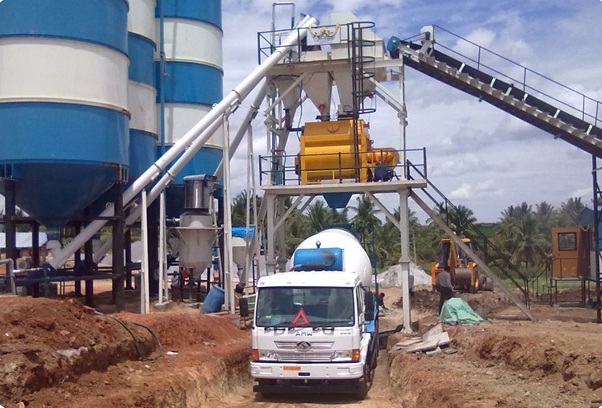
Understanding Concrete Batch Plants: Building the Foundation of Modern Construction
Concrete batch plants play a crucial role in the construction industry, serving as the literal foundation upon which modern infrastructure is built. These facilities are responsible for mixing various ingredients to produce high-quality concrete, which is used in everything from skyscrapers and bridges to residential homes and sidewalks. In this article, we will delve into the world of concrete batch plants, exploring how they work, their types, environmental concerns, and their significance in the construction industry.How Do Concrete Batch Plants Work?
Concrete batch plants are industrial facilities designed to produce large quantities of concrete. They operate on a simple yet efficient principle: mixing the essential ingredients of concrete – cement, water, aggregates (such as sand and gravel), and often, admixtures – to create a uniform and durable construction material. The process can be broken down into the following steps:
Aggregates Storage and Feeding: Raw materials like sand, gravel, and crushed stone are stored in hoppers and transported to the batch plant via conveyor belts or loaders.
Cement Silos: Cement, a key binding agent, is stored in silos on-site and transported to the mixers as needed.
Batching: The plant’s computerized control system precisely measures and dispenses the correct proportions of aggregates, cement, water, and any necessary admixtures into a mixing drum.
Mixing: The ingredients are mixed in the drum, and the rotation continues until the concrete achieves the desired consistency, typically around 60 to 90 seconds.
Discharge: The mixed concrete is discharged from the drum into trucks, ready for transport to construction sites.
Types of Concrete Batch Plants
Ready-Mix Concrete Plants: These plants produce concrete in large quantities and deliver it to construction sites using specialized transit mixer trucks. Ready-mix concrete is ideal for projects where time is critical, as it arrives on-site and is immediately ready for use.
Central Mix Plants: In central mix plants, all the ingredients are mixed at a central location within the facility before being loaded onto transport trucks. The resulting concrete is often of higher quality but may require slightly longer transportation times.
Volumetric Concrete Plants: Volumetric plants allow for on-site mixing, with the raw materials stored separately and mixed as needed. This flexibility makes them suitable for small or remote projects, ensuring no concrete is wasted.
Environmental Concerns
Concrete batch plants, like many industrial facilities, have environmental considerations that need to be addressed. Some of the key concerns include:
Air Quality: The dust generated during the handling and mixing of raw materials can affect air quality. Proper dust control measures and emission-reducing technologies are essential.
Noise Pollution: The operation of concrete batch plants can produce noise that might affect nearby communities. Noise barriers and operational restrictions can help mitigate this issue.
Water Usage: Concrete production requires significant water usage. Proper water management and recycling systems can minimize its environmental impact.
Energy Consumption: Energy-intensive processes are involved in concrete mixing. Using energy-efficient equipment and practices can reduce energy consumption.
The Significance of Concrete Batch Plants
Concrete batch plants are critical components of the construction industry. Their ability to efficiently produce high-quality concrete is essential for the development of infrastructure, including buildings, roads, bridges, and more. Here are a few reasons why concrete batch plants are significant:
Quality Control: Concrete batch plants ensure that the mix is consistent, meeting strict quality standards and project specifications.
Efficiency: They allow for the rapid production of concrete, reducing construction delays and enhancing project timelines.
Versatility: Concrete batch plants can produce various types of concrete, suitable for different construction applications.
Sustainability: Efforts to reduce the environmental impact of concrete production are leading to the development of more eco-friendly technologies in batch plants.
Conclusion
Concrete batch plants are the unsung heroes of the construction industry, providing the essential material upon which our modern infrastructure relies. Understanding how these plants work, their types, and the environmental considerations associated with their operation is crucial for ensuring that construction projects are not only efficient but also environmentally responsible. As technology continues to evolve, concrete batch plants will play a pivotal role in the sustainable and innovative construction practices of the future.


Post A Comment